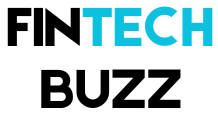Introduction
Decentralized Finance (DeFi) has emerged as a revolutionary force in the financial landscape, leveraging blockchain technology to create open, permissionless financial systems. Unlike traditional finance, which is often centralized and regulated, DeFi operates on a peer-to-peer basis, allowing users to lend, borrow, and trade without intermediaries. This article explores how the rise of DeFi is impacting traditional banking and what the future may hold for both sectors.
Understanding DeFi
DeFi encompasses a range of financial services, including lending platforms, decentralized exchanges (DEXs), stablecoins, and yield farming. Built primarily on Ethereum and other blockchain networks, DeFi applications enable users to interact directly with smart contracts, eliminating the need for traditional banks.
Key Impacts on Traditional Banking
- Disintermediation
- DeFi eliminates the need for intermediaries such as banks and brokers. This shift can lead to reduced fees and faster transaction times, challenging traditional banks to rethink their value propositions.
- Increased Competition
- DeFi platforms often offer more attractive interest rates for deposits and lower borrowing costs. This competition can pressure traditional banks to innovate and adjust their pricing models to retain customers.
- Access to Financial Services
- DeFi promotes financial inclusion by providing access to financial services for unbanked and underbanked populations. Traditional banks may need to adapt their services to reach these markets or risk losing potential customers.
- Transparency and Security
- DeFi transactions are recorded on public blockchains, providing unparalleled transparency. Traditional banks may need to adopt more transparent practices to regain consumer trust, especially in light of past financial scandals.
- Regulatory Challenges
- As DeFi grows, regulators are grappling with how to govern this new landscape. Traditional banks are accustomed to strict regulations, and they may find themselves at a disadvantage if DeFi operates in a less regulated environment.
- Innovation in Products and Services
- The rapid evolution of DeFi is pushing traditional banks to innovate, leading to the development of new products such as crypto-custody services and blockchain-based payment solutions.
Case Studies
- Aave and Compound: These DeFi platforms allow users to lend and borrow assets directly, often yielding higher returns than traditional savings accounts.
- Uniswap: A decentralized exchange that has gained significant traction, allowing users to trade tokens without relying on traditional market makers.
Future Considerations
As DeFi continues to grow, traditional banks may need to adopt hybrid models that incorporate both centralized and decentralized elements. This could include partnerships with DeFi platforms or the development of their own blockchain solutions.
Conclusion
The rise of DeFi presents both challenges and opportunities for traditional banking. As the financial landscape evolves, banks that embrace innovation and adapt to changing consumer preferences will be better positioned to thrive in this new era. Understanding and responding to the DeFi movement will be crucial for banks aiming to maintain their relevance and competitive edge in the coming years.


